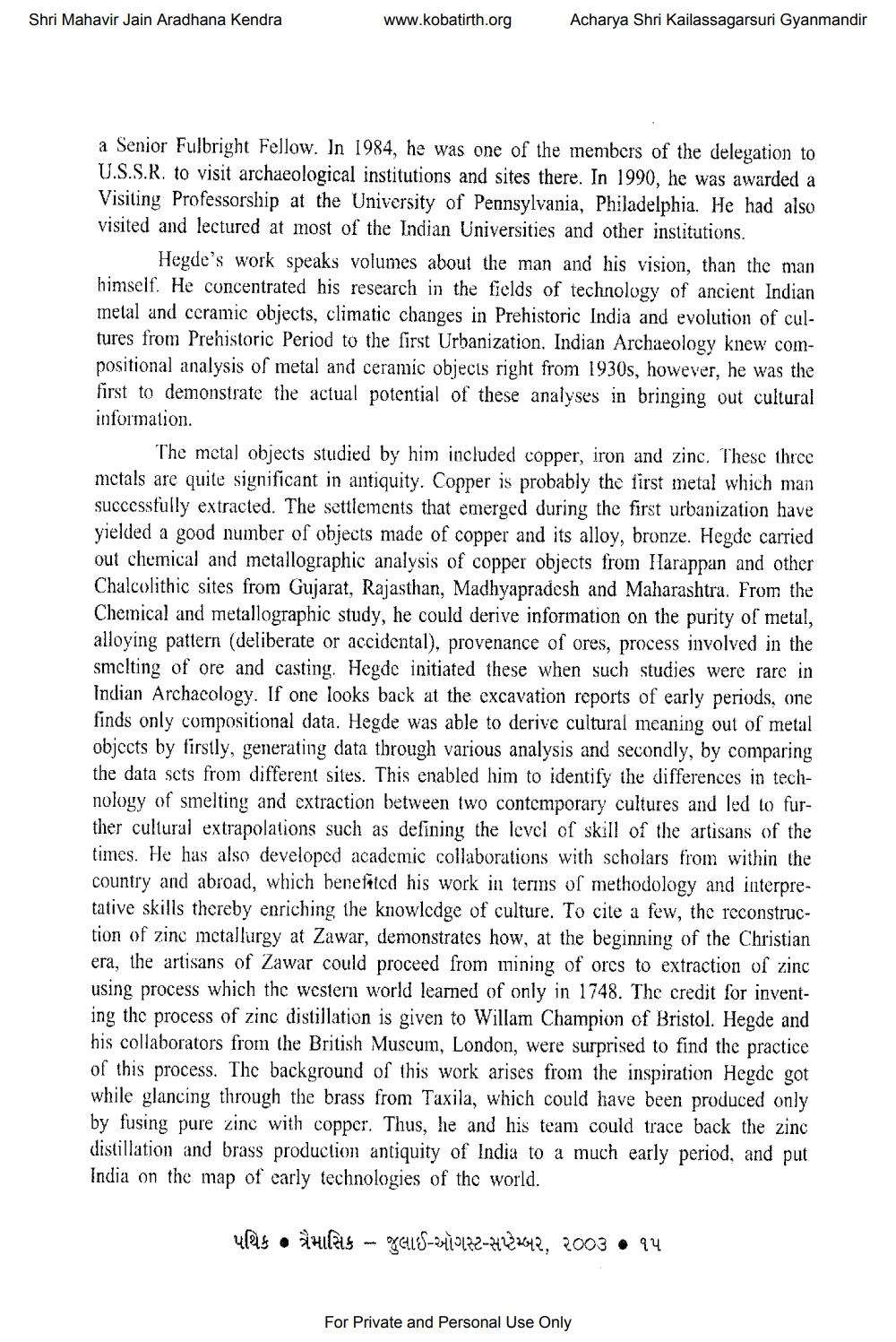________________
Shri Mahavir Jain Aradhana Kendra
www.kobatirth.org
Acharya Shri Kailassagarsuri Gyanmandir
a Senior Fulbright Fellow. In 1984, he was one of the members of the delegation to U.S.S.R. to visit archaeological institutions and sites there. In 1990, he was awarded a Visiting Professorship at the University of Pennsylvania, Philadelphia. He had also visited and lectured at most of the Indian Universities and other institutions.
Hegde's work speaks volumes about the man and his vision, than the man himself. He concentrated his research in the fields of technology of ancient Indian metal and ceramic objects, climatic changes in Prehistoric India and evolution of cultures from Prehistoric Period to the first Urbanization. Indian Archaeology knew compositional analysis of metal and ceramic objects right from 1930s, however, he was the first to demonstrate the actual potential of these analyses in bringing out cultural information.
The metal objects studied by him included copper, iron and zinc. These three mctals are quite significant in antiquity. Copper is probably the first metal which man successfully extracted. The settlements that emerged during the first urbanization have yielded a good number of objects made of copper and its alloy, bronze. Hegde carried out chemical and metallographic analysis of copper objects from Ilarappan and other Chalcolithic sites from Gujarat, Rajasthan, Madhyapradesh and Maharashtra. From the Chemical and metallographic study, he could derive information on the purity of metal, alloying pattern (deliberate or accidental), provenance of ores, process involved in the smelting of ore and casting. Hegde initiated these when such studies were rare in Indian Archacology. If one looks back at the excavation reports of early periods, one finds only compositional data. Hegde was able to derive cultural meaning out of metal objects by firstly, generating data through various analysis and secondly, by comparing the data sets from different sites. This enabled him to identify the differences in technology of smelting and extraction between two contemporary cultures and led to further cultural extrapolations such as defining the level of skill of the artisans of the times. He has also developed academic collaborations with scholars from within the country and abroad, which henefited his work in terms of methodology and interpretative skills thereby enriching the knowledge of culture. To cite a few, the reconstruction of zinc mctallurgy at Zawar, demonstrates how, at the beginning of the C era, the artisans of Zawar could proceed from mining of orcs to extraction of zinc using process which the western world learned of only in 1748. The credit for inventing the process of zinc distillation is given to Willam Champion of Bristol. Hegde and his collaborators from the British Museum, London, were surprised to find the practice of this process. The background of this work arises from the inspiration Hegde got while glancing through the brass from Taxila, which could have been produced only by fusing pure zinc with copper. Thus, he and his team could trace back the zinc distillation and brass production antiquity of India to a much early period, and put India on the map of early technologies of the world.
As
duas - YELLS-2410122-822042, 2003 • 94
For Private and Personal Use Only




